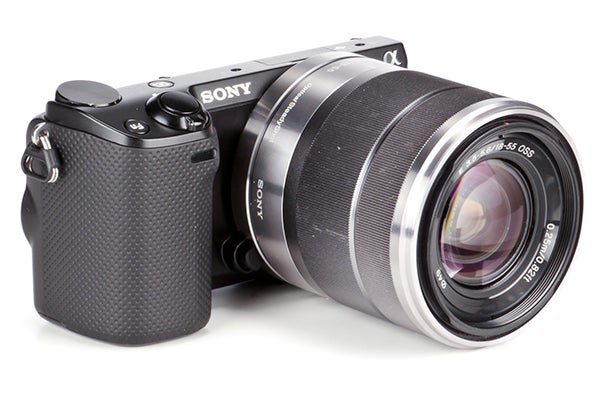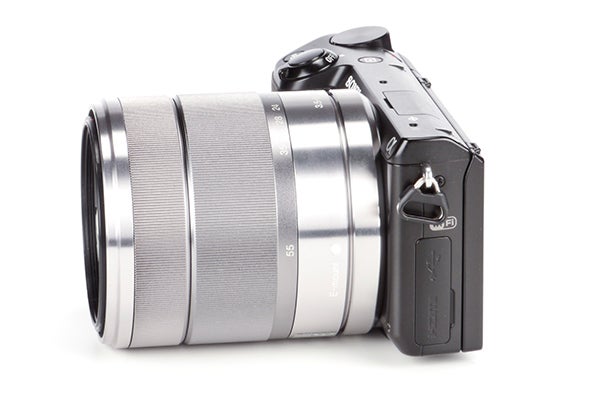Sony NEX-5R Review - Design and Performance Review
Design and Performance
The Sony NEX-5R is a very good CSC if you can forgive the fiddly touchscreen controls

Sections
- Page 1 Sony NEX-5R Review
- Page 2 Design and Performance Review
- Page 3 Image Quality and Verdict Review
- Page 4 ISO Peformance Review
Sony NEX-5R: Design
There are certain elements of the Sony NEX-5R’s design where little has changed between it and its predecessors, and one of these is the camera’s menu system.
The main functionality is still categorised into various sub-menus, which include ‘Shoot Mode’, ‘Camera’, ‘Brightness and Colour’ and so on, with the various shooting functionality housed therein.

While these are easy enough to navigate, if you’re in a hurry looking to change shooting settings then they can be somewhat of a chore to navigate and could well lead to you missing the shot that you were after.
The touch screen does provide an alternative way to navigate the menu system, although the touch screen itself is not without its flaws.
The screen and interface suffer from having buttons that are often too small for even modestly sized fingertips. An attempt to press a certain button can result in the opposite being pressed, and thus you find yourself in the wrong option and incredibly frustrated.
Although there are a range of physical buttons which mean that you don’t need to be too concerned with the performance of the touch screen, it’d be good if the touch screen just worked.

While the actual body hasn’t changes much from the NEX-5N, the top plate has. The NEX-5R now has an on/off switch, as opposed to a button on the 5N, that’s located around the camera’s shutter button, while the video button is out of way of the accidental presses now. But the most welcome feature is an all-new control dial.
This dial offers direct control over a range of different functionality – not only can it be used to control more common functions such as aperture and shutter speed, but it also allows for control over shooting modes and suchlike.
The NEX-5R’s ‘Fn’ button, which is fully customisable, is now located to the right of the shutter button and as such offers quick access to a host of commonly used shooting tweaks.
The obvious omission here is a built-in flash, with Sony instead opting for a ‘Smart Accessory Terminal’ to which an external flash can be attached. The flash is supplied, though, so you don’t have to shell out more to get one as on one or two similar style cameras.
But this is a small complaint considering what Sony has added, an ingenious self-portrait function. Flip the vari-angle screen upwards around 180 degrees so it’s facing forwards and the NEX-5R automatically realises that you’re looking to capture a self-portrait and readies the camera to capture that shot with by setting a three-second self-timer. It’s may seem like a small thing, but it’s a clever bit of design.

Sony NEX-5R: Performance
Although the Sony NEX-5R performs well on the whole, there are a few areas in which the camera disappoints.
One of these areas is start-up time. A criticism of the Sony NEX-5N was that it took too long to power up and this flaw remains with the NEX-5R. Although it powers up quick enough, it takes some three seconds before the screen feed appears.
As mentioned previously, the camera’s menu system is another area that disappoints. The system could well do with a complete overhaul rather than the incremental changes seen here.

Those two negative points are the only real flaws in the camera’s performance however, as on the whole the Sony NEX-5R is a capable performer.
The hybrid contrast and phase-detect AF system performs really well, by utilising phase-detect AF to determine the distance between the camera and the subject, then contrast-detect AF to fine-tune the focus. It’s not as quick as the very fastest CSC focusing systems on the market, but it’s certainly a lot quicker than non-hybrid AF systems.
The NEX-5R also has a respectable buffer capacity considering the speed at which it captures images. The camera managed nine Raw JPEG files at 10fps using a Class 10 card, with this increasing to 12 frames when shooting JPEG only.
Although the Sony NEX-5R doesn’t feature in-camera stabilisation, all NEX lenses are image stabilised and as such blurry images shouldn’t be an issue. One benefit of using optical image stabilisation, rather than in-camera stabilisation, is that it uses less battery power and as a result the NEX-5R manages around 330 shots on a single charge.


